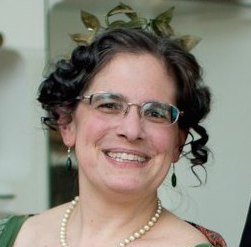As previously noted, European descriptions of American dances like the late nineteenth-century two-step are sometimes more helpful than American ones. Having spent more time than expected this past weekend speaking French in Toronto (with a bunch of folks from Montréal), I’m inspired today to point out a couple of American-influenced descriptions of the two-step from Paris around 1900.
George Washington Lopp was an American dancing master residing in Paris, where in 1903 he published La Danse. Much of it was copied/translated directly from M. B. Gilbert’s Round Dancing, but the additions by Lopp are particularly interesting for what they show about the evolution of dance in the 1890s. Among these are a chapter on two-step and three-step.
Lopp describes the two-step as being “much more recent than the galop [which] it much resembles” (my translation of the original French), with a more moderate tempo and more elongated steps. He finds the resemblance so strong that he doesn’t even describe the galop separately, merely referring the reader back to the two-step, though he notes that one difference is that in the two-step one slides the entire foot along the floor but in the galop one dances on the toes. The main difference is tempo: the galop is danced in 2/4 time at 144 beats per minute, the two-step in 2/4 or 6/8 time at 120 beats per minute.
Most American dance manuals do not differentiate between 2/4 and 6/8 time, counting them both as “1&2” even though 6/8 technically is “1…a2”. (For the precise breakdown of the timing in 6/8, see my discussion of Edward Scott’s two-step. Good dancers will match the musical accent instinctively.) Two-step is most often described, when any detail at all is given, as in 6/8 time. So it is mildly unusual, and very American, to have 2/4 stated outright as an option for two-step.
Lopp’s actual step-description holds no surprises: a slide to the side followed by a chassé, for a sequence of “step-close-step” in each measure of music, the gentleman starting left and the lady right. He does more-or-less spell out the turns, describing the final “-step” in each two-step as backward (en arrière) with the left foot or forward (en avant) with the right, which implies the step-around/into of standard nineteenth-century turning technique. “Backward” means putting ones back to the line of dance while stepping across it around one’s partner; “forward” means facing line of dance while stepping between one’s partner’s feet. This is for a clockwise turn; period practice does allow for counter-clockwise turns as well.
Henri de Soria fils was a French dancing master and professor at the Conservatoire National whose Manuel du Maintien et de la Danse went through at least two editions in Paris and London around 1895-1905. He did not describe the two-step in either edition, but sheet music for the two-step Marche des Petits Pierrots, which the Bibliothèque nationale de France dates to circa 1896, includes his instructions for the “Two Step (Deux Pas)“, which he calls a “nouvelle danse américaine” and describes as very easy and agreeable to dance. Soria notes that it is danced in 6/8 to the “mouvement de marche modéré”, though without giving any specific tempo.
The actual step given is the same standard one given by Lopp, though without the detail of the turn. Soria does suggest a step-length of about twenty-five centimeters on the (presumed) turning step. The gentleman starts with the left foot and the lady with the right.
Soria’s full two-step is actually a sequence alternating two measures of two-step and two measures of four-slide galop:
2b two-step (one complete turn)
2b four-slide galop (end with half-turn)
2b two-step (one complete turn)
2b four-slide galop (end with half-turn)
I’ve added the turns, which I think are implicit, though one could technically dance it without turning. Turns are clockwise, though one could reverse some or all of them for variety.
This sequence is a flipped-around version of Philadelphia dancing master Albert Newman’s Glide Two-Step or the popular Esmeralda polka sequence of the mid-nineteenth century.
A final note: both Lopp and Soria call the dance “Two Step”, without a hyphen.


Leave a Reply